Not too long ago, in the book section at Target, I overheard a woman say to her companion, “I stay away from big books.” They walked away, so I didn’t get to hear any more of the conversation, but it made me think about big books.
I can imagine many reasons someone might offer for staying away from big books:
- Big books intimidate me.
- Big books contain too much stuff for me to keep straight in my head.
- Big books are too heavy to carry around.
- Reading a big book requires a long time commitment.
- I prefer shorter books that I can read quickly.
- Big books deal with too many big ideas. I just want an entertaining story.
For my money, a book should be as long as it needs to be to tell its story. And a long story can be just as entertaining as a short one. In fact—and I know many readers who would agree with me here—if a story is well told, I sometimes want it not to end; occasionally I purposely wait to finish a book because I don’t want to leave those characters and their world quite yet.
Here, in no particular order, are some Big Books that I have read and loved. For the sake of definition, I use the term Big Book to refer to one of 500 or more pages.
Cloud Atlas by David Mitchell
paperback, 515 pages
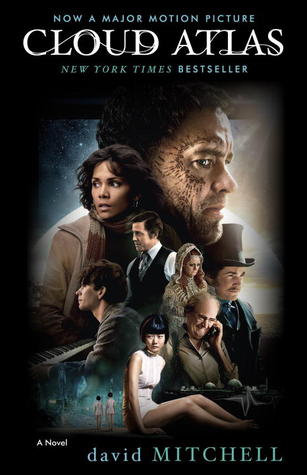 In this brilliant novel David Mitchell uses intertwined stories to demonstrate how individual people and their fates are connected across space and time. The literary genres featured here include autobiography, philosophical inquiry, mystery, and speculative fiction in a narrative framework that circles back on itself to create the paradox of discrete moments within the vast expanse of human experience.
In this brilliant novel David Mitchell uses intertwined stories to demonstrate how individual people and their fates are connected across space and time. The literary genres featured here include autobiography, philosophical inquiry, mystery, and speculative fiction in a narrative framework that circles back on itself to create the paradox of discrete moments within the vast expanse of human experience.
This big novel is challenging but not daunting. It well rewards the time spent on a slow and careful reading. This was my introduction to David Mitchell’s work, and I am slowly working my way through the rest of his work.
The Goldfinch by Donna Tartt
hardcover, 773 pages
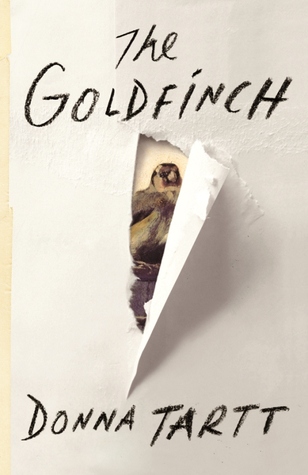 Thirteen-year-old Theo Decker is devastated by the death of his mother. Having been abandoned earlier by his father, he is taken in by the wealthy family of a former schoolmate before his father claims him and moves him from New York City to Las Vegas in pursuit of his own agenda.
Thirteen-year-old Theo Decker is devastated by the death of his mother. Having been abandoned earlier by his father, he is taken in by the wealthy family of a former schoolmate before his father claims him and moves him from New York City to Las Vegas in pursuit of his own agenda.
Theo spends his adolescence and young adulthood in search of love, family, and a sense of identity. Intrigue in the world of art and antiques keeps the plot moving. With an ever-growing cast of compelling characters, Theo’s coming-of-age travels take him between New York, Las Vegas, and Amsterdam in a journey during which he must learn what things are worth keeping and what ones he must let go of.
This big book caused a big critical controversy over the question, “Is it art?” I’m not going to contribute to that debate, with its unsavory suggestion that any work of literature that is popular cannot also be artistic or literary. All I can tell you is that, for me, this was a real page-turner.
Special Topics in Calamity Physics by Marisha Pessl
hardcover, 514 pages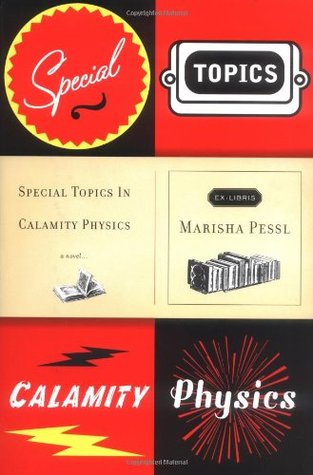
Marisha Pessl’s dazzling debut sparked raves from critics and heralded the arrival of a vibrant new voice in American fiction. At the center of Special Topics in Calamity Physics is clever, deadpan Blue van Meer, who has a head full of literary, philosophical, scientific, and cinematic knowledge, but she could use some friends. Upon entering the elite St. Gallway School, she finds some–a clique of eccentrics known as the Bluebloods. One drowning and one hanging later, Blue finds herself puzzling out a byzantine murder mystery. Nabokov meets Donna Tartt (then invites the rest of the Western Canon to the party) in this novel–with visual aids drawn by the author–that has won over readers of all ages.
If you like literary puzzles, you’ll love this big novel that requires readers to tolerate ambiguity and hold several possibilities in abeyance until the pieces all, finally, fall into place.
East of Eden by John Steinbeck
paperback, 601 pages
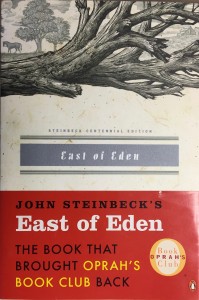
Set in the farmland of the Salinas Valley in California, this novel retells the stories of Adam and Eve and of the rivalry between Cain and Abel through the intertwined generations of the Trask and Hamilton families.
Here Steinbeck created some of his most memorable characters and explored his most enduring themes: the mystery of identity; the inexplicability of love; and the murderous consequences of love’s absence.
And there’s no question over this big novel, as there is about Donna Tartt’s The Goldfinch, of whether it’s art. It most definitely is—an artful and rewarding reading experience.
The Secret History by Donna Tartt
paperback, 503 pages
 As a classics major myself, I was easily drawn into Donna Tartt’s first novel about an inner circle of “five students, worldly and self-assured, selected by a charismatic classics professor to participate in the search for truth and beauty. Together they study the mysteries of ancient Greek culture and spend long weekends at an old country house, reading, boating, basking in an Indian summer that stretches late into autumn.”
As a classics major myself, I was easily drawn into Donna Tartt’s first novel about an inner circle of “five students, worldly and self-assured, selected by a charismatic classics professor to participate in the search for truth and beauty. Together they study the mysteries of ancient Greek culture and spend long weekends at an old country house, reading, boating, basking in an Indian summer that stretches late into autumn.”
Many years later one of these students, Richard Papen, pens this confession of how willing he was to be drawn into this inner circle and of how far these young men went to experience what they considered the fullness of intellectual and emotional life.
This is a big novel full of big ideas:
Hugely ambitious and compulsively readable, this is a chronicle of deception and complicity, of Dionysian abandon, of innocence corrupted by self-love and moral arrogance; and, finally, it is a story of guilt and responsibility.
Life After Life by Kate Atkinson
hardcover, 544 pages
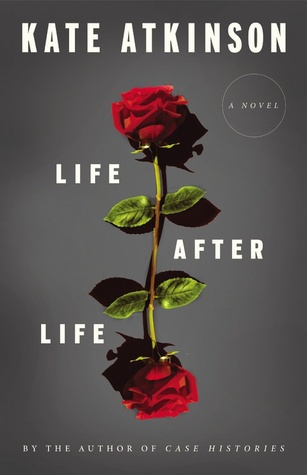 On a snowy, cold night in 1910 Ursula Todd is born, the third child of a wealthy English banker and his wife. She arrives too soon and dies before drawing her first breath. On the same night Ursula Todd is born, takes a big breath, and lets out a loud cry, the beginning of but one of the many lives Ursula Todd is destined to live.
On a snowy, cold night in 1910 Ursula Todd is born, the third child of a wealthy English banker and his wife. She arrives too soon and dies before drawing her first breath. On the same night Ursula Todd is born, takes a big breath, and lets out a loud cry, the beginning of but one of the many lives Ursula Todd is destined to live.
Throughout the novel Ursula Todd is reborn many times and dies many times, at different points in her life span. She seems to learn a little bit from each life that her unconscious mind carries into subsequent lives—because she is destined to live her life over and over again until she gets it right. The fate of modern civilization depends on her ability to get it right, finally.
This big book was a big hit: It was a winner in the 2013 Goodreads Choice Awards.
Possession: A Romance by A.S. Byatt
paperback, 555 pages
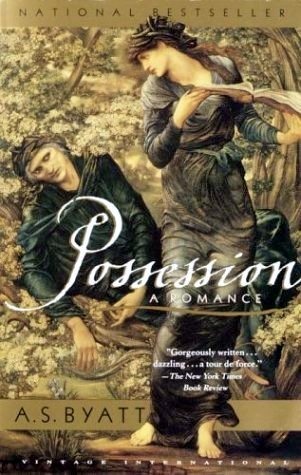
Possession is an exhilarating novel of wit and romance, at once an intellectual mystery and triumphant love story. It is the tale of a pair of young scholars researching the lives of two Victorian poets. As they uncover their letters, journals, and poems, and track their movements from London to Yorkshire—from spiritualist séances to the fairy-haunted far west of Brittany—what emerges is an extraordinary counterpoint of passions and ideas.
This is another book you’ll love if you like literary puzzles. I liked this big novel so much that I’ve read it twice.
Underworld by Don DeLillo
hardcover, 827 pages
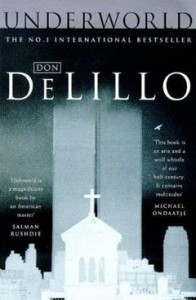
This book is so complex that I’m going to rely on Goodreads to describe it:
While Eisenstein documented the forces of totalitarianism and Stalinism upon the faces of the Russian peoples, DeLillo offers a stunning, at times overwhelming, document of the twin forces of the cold war and American culture, compelling that “swerve from evenness” in which he finds events and people both wondrous and horrifying. Underworld opens with a breathlessly graceful prologue set during the final game of the Giants-Dodgers pennant race in 1951. Written in what DeLillo calls “super-omniscience” the sentences sweep from young Cotter Martin as he jumps the gate to the press box, soars over the radio waves, runs out to the diamond, slides in on a fast ball, pops into the stands where J. Edgar Hoover is sitting with a drunken Jackie Gleason and a splenetic Frank Sinatra, and learns of the Soviet Union’s second detonation of a nuclear bomb. It’s an absolutely thrilling literary moment. When Bobby Thomson hits Branca’s pitch into the outstretched hand of Cotter–the “shot heard around the world”–and Jackie Gleason pukes on Sinatra’s shoes, the events of the next few decades are set in motion, all threaded together by the baseball as it passes from hand to hand.
Yet despite its complexity, the story keeps moving through all 827 pages. Similar to David Mitchell, DeLillo uses intertwined stories to create the sense of connected experience over 50 years of American life.
I Know This Much Is True by Wally Lamb
paperback, 897 pages
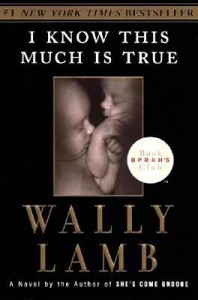 This book narrates the story of identical twins Thomas and Dominick Birdsey. The novel opens when the two are adults. Thomas has schizophrenia, and Dominick is his caregiver. It’s a complex story that jumps between the 1920s, the 1940s, the 1960s, and the 1980s to examine family relationships, the interconnections between generations, love, and responsibility (both personal and civic). Despite the presence of several storylines in different eras playing out throughout, the novel is easy to follow.
This book narrates the story of identical twins Thomas and Dominick Birdsey. The novel opens when the two are adults. Thomas has schizophrenia, and Dominick is his caregiver. It’s a complex story that jumps between the 1920s, the 1940s, the 1960s, and the 1980s to examine family relationships, the interconnections between generations, love, and responsibility (both personal and civic). Despite the presence of several storylines in different eras playing out throughout, the novel is easy to follow.
This big novel that deals with big truths has a big, loyal following. I know three people who name I Know This Much is True as the favorite book they’ve ever read. Many others say this is the novel that has stuck with them the most of all the books they’ve ever read.
If you haven’t read it yet, I—and a lot of other people—recommend that you give it a try. Chances are that you won’t be able to put it down until you’ve finished page 897.
The Pillars of the Earth by Ken Follett
paperback, 973 pages
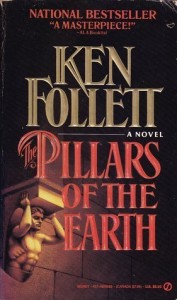 Set in twelfth-century England, this is the story of the building of a great Gothic cathedral. Several characters people the story: Tom Builder, who dreams of working on such a structure; Philip, prior of the fictional Kingsbridge who must fight the sin of pride in his own desire to build the world’s biggest church; Jack, Tom’s son, a master stone artist; and Aliena, a noblewoman who fights patriarchal prejudice to build a business.
Set in twelfth-century England, this is the story of the building of a great Gothic cathedral. Several characters people the story: Tom Builder, who dreams of working on such a structure; Philip, prior of the fictional Kingsbridge who must fight the sin of pride in his own desire to build the world’s biggest church; Jack, Tom’s son, a master stone artist; and Aliena, a noblewoman who fights patriarchal prejudice to build a business.
But perhaps the two dominant characters of the novel are the cathedral itself and the historical age in which it is built. The cathedral becomes the focal point for pride, arrogance, and greed among the Church and the nobility, and for a source of sustenance among the peasant workers. In an age when geopolitical boundaries did not exist, power belonged to whichever nobleman could muster the biggest army. Peasants were at the mercy of the nobility, and peasants lived or died according to noble whim. The Church and the nobility jockeyed for power over the masses whose labor they both exploited.
Ken Follett had written a number of thrillers before he turned to this big story, his pet project. He spent years on the research necessary to write the book. In a foreword he says that many readers tell him Pillars of the Earth is their favorite of his novels. “It’s mine, too,” he says.
What about you?
Do you avoid big books, or do you embrace them? Are there any big books that you have read and loved?
Let us know in the comments.

